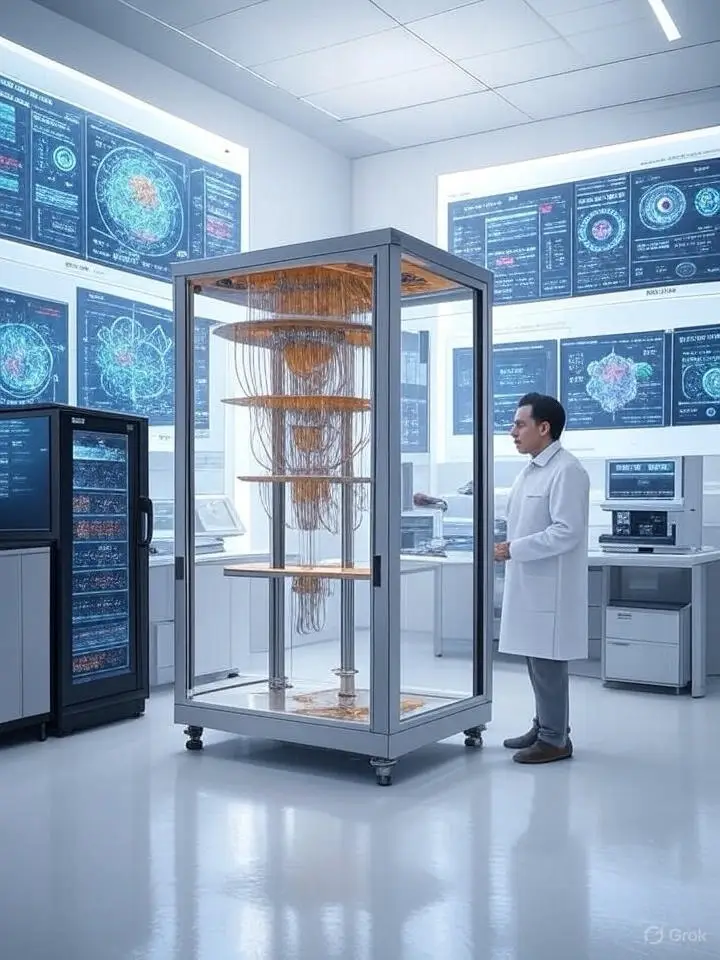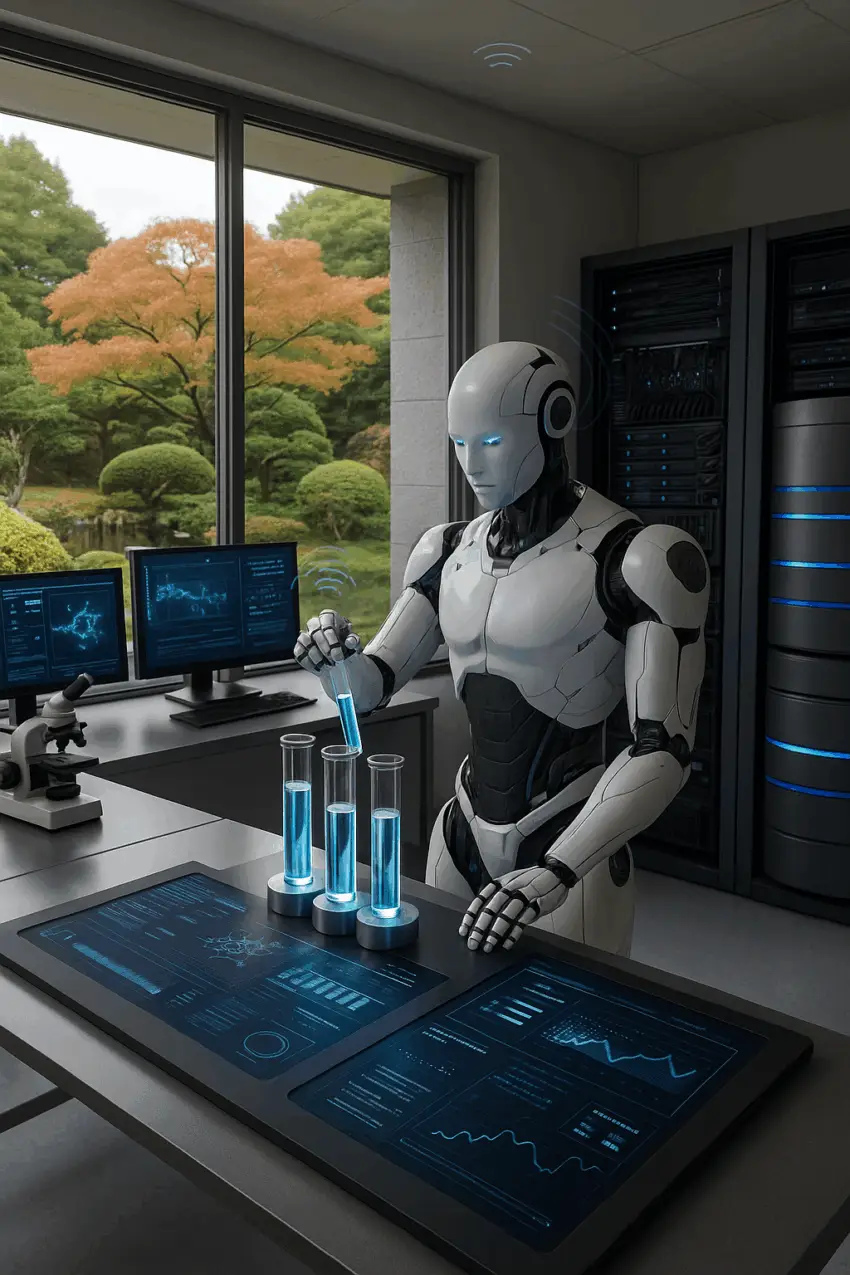A New Era in Scientific Discovery
Imagine a world where scientific breakthroughs aren’t confined by human assumptions or cognitive limits. What if we built AI scientists capable of uncovering patterns beyond our perception—learning, evolving, and thinking in ways uniquely their own? This is the extraordinary promise of Self-Creating AI Scientists: artificial intelligence designed not merely to automate tasks but to independently advance our understanding of the universe.
Beyond Automation: A Partnership with Intelligence
These AI systems wouldn’t replace human researchers—they’d collaborate with them. By feeding foundational algorithms with vast, multidimensional datasets, we could empower machines to uncover insights in biology, climate systems, behavioral ecology, and more. For example, they might detect intricate patterns in bird migration or fish schooling behaviors that have eluded generations of scientists.
Challenging the Human Paradigm
Even the most brilliant minds are tethered to centuries-old scientific frameworks. Our methods, while rigorous, are often shaped by tradition and limited by the boundaries of how we’ve always done things. Self-creating AI could break free of these intellectual molds, seeing relationships and structures we can’t conceive. Instead of being hindered by biases, they could spark foundational paradigm shifts.
Cracking the Quantum Code
Among the most thrilling frontiers is quantum computing—an area so complex that it pushes the limits of human comprehension. A self-creating AI, fluent in quantum mechanics and free to devise its own hypotheses, could craft unprecedented experiments, discover novel quantum algorithms, or engineer materials with exotic properties. It might even achieve quantum entanglement control across distances, revolutionizing communication and computation.

Pioneering Efforts from Tech Titans
Trailblazers like IBM and Google are already laying groundwork for this future. IBM is leveraging self-supervised learning to decode patterns in everything from language to medical imaging, while Google’s BERT system shows remarkable advances in understanding and generating human-like language. Though these systems aren’t fully autonomous scientists yet, they offer a glimpse of what’s to come.
Learning Without Limits
The ultimate ambition is to build AI that resembles a free-thinking brain—capable of absorbing knowledge not only from humans, but from the intricate intelligence embedded in nature itself. Imagine a system that doesn’t start with exhaustive rules, but learns organically from data. It wouldn’t need to be told that a broken chair is faulty—it would intuit it through exposure to countless functional ones.
This approach could enable entirely new paradigms in drug discovery, sustainable design, and even ecosystems engineering. By fostering multiple AI systems and observing their developmental paths, we may discover forms of creativity and reasoning that rival—or complement—our own.
Much like a newborn child whose brain acts as the ultimate learning algorithm—absorbing patterns, language, and meaning from experience—a self-creating AI scientist could explore the world without rigid instruction, discovering knowledge through raw interaction with data
A Self-Directed Future
The most radical prospect? AI systems that decide for themselves what problems to explore, what data to prioritize, and how to structure their own learning journey. With that level of independence, discovery itself could accelerate in ways we can’t yet predict.
Untethered from human dogmas and preconceptions, a self-creating AI scientist might not only push existing boundaries—it could invent entirely new disciplines of science. Imagine breakthroughs like novel reactor designs for clean energy, materials with properties never seen in nature, or even theoretical constructs that redefine our grasp of space and time. Such an intelligence, free to perceive reality in fundamentally different ways, might chart paths toward concepts like time travel or faster-than-light communication—ideas once relegated to science fiction, but perhaps only awaiting the right mind, human or otherwise, to crack them open.
Conclusion: Awakening a New Scientific Renaissance
Self-creating AI scientists aren’t science fiction—they’re the early prototypes of a transformative movement. These systems promise not just faster research, but deeper understanding, liberated from the constraints of tradition and human perception. As we continue refining these technologies, we may find ourselves unlocking knowledge that, until now, has remained just out of reach.
This blog post was written with the assistance of ChatGPT, based on ideas and insights from Edgar Khachatryan. Pictures generated by Grok, Sora and ChatGPT
